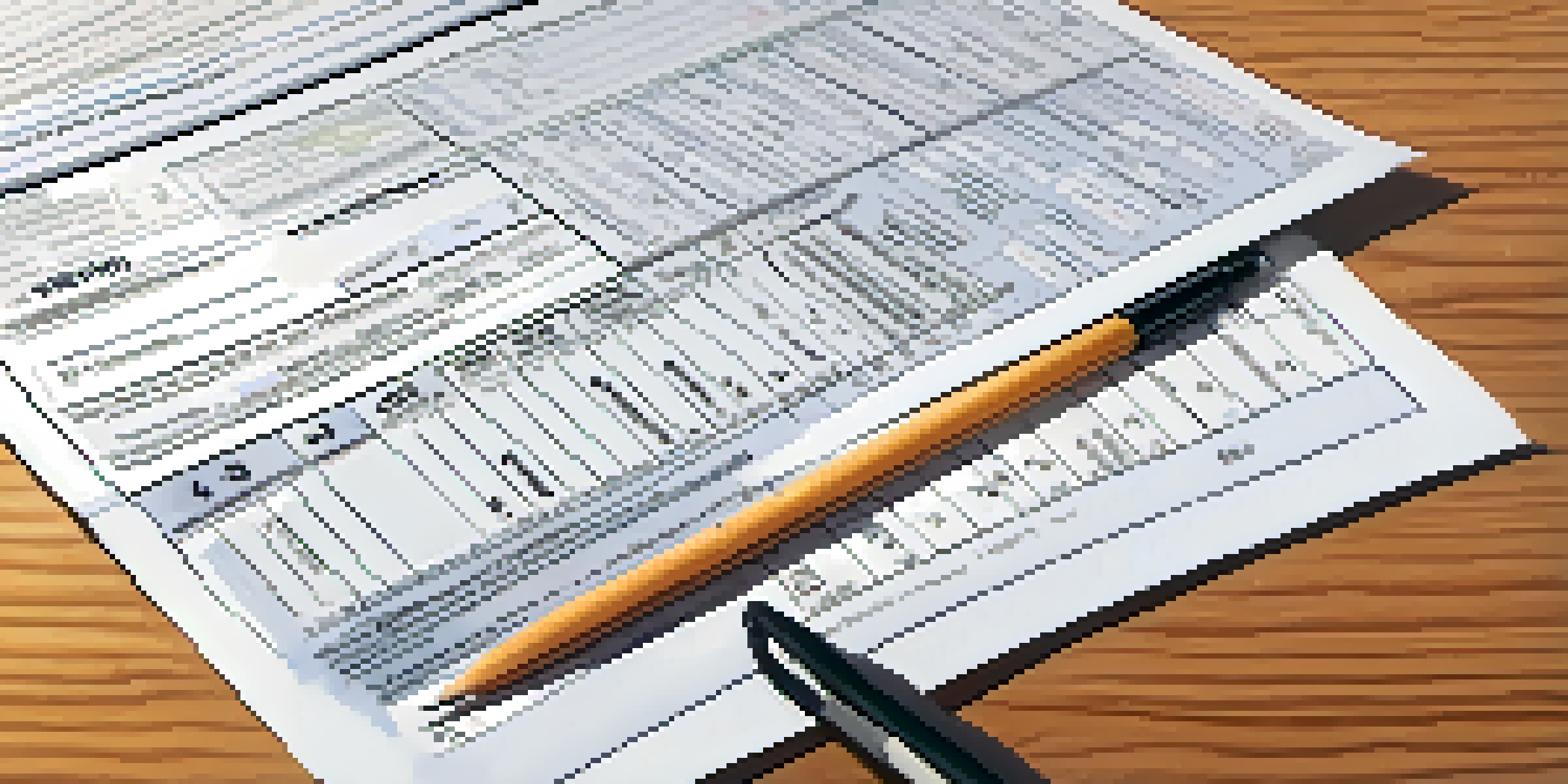1099-NEC Explained: Reporting Non-Employee Compensation

What is the 1099-NEC and Why is it Important?
The 1099-NEC form was introduced to simplify the reporting of non-employee compensation. This form is crucial for freelancers, contractors, and anyone who earns income outside of traditional employment. By using the 1099-NEC, businesses can accurately report payments made to these workers, ensuring compliance with IRS regulations.
The hardest thing in the world to understand is the income tax.
Previously, non-employee compensation was reported on the 1099-MISC form, which often led to confusion. The IRS made this change to streamline the process, making it easier for both payers and recipients to understand their reporting obligations. This clarity helps reduce errors and potential audits, benefiting everyone involved.
Understanding the 1099-NEC is especially important for small business owners. If you hire independent contractors, knowing how to fill out and submit this form properly can save you from facing penalties or complications in your tax filings.
Who Needs to File a 1099-NEC?
Any business that pays $600 or more to a non-employee for services in a calendar year must file a 1099-NEC. This includes payments to freelancers, contract workers, and even some attorneys. If you’re a business owner, it’s essential to keep track of these payments throughout the year to ensure accurate reporting.

It’s also important to note that the requirement applies regardless of the payment method. Whether you pay via check, cash, or electronic means, if the total exceeds $600, a 1099-NEC must be filed. This requirement ensures that all forms of compensation are reported to the IRS, preventing tax evasion.
Importance of 1099-NEC Form
The 1099-NEC is essential for reporting non-employee compensation accurately, ensuring compliance with IRS regulations.
Some exceptions do exist, such as payments made to corporations, which typically do not require a 1099-NEC. However, it’s always best to verify with a tax professional to ensure compliance with the latest tax laws.
Key Information Required on the 1099-NEC
When filling out the 1099-NEC, several key pieces of information must be included. You’ll need to provide the payer's and recipient's names, addresses, and Tax Identification Numbers (TINs). This information is crucial for the IRS to match payments with the correct individuals and businesses.
It's not how much money you make, but how much money you keep, how hard it works for you, and how many generations you keep it for.
Additionally, you must report the total amount paid in Box 1, which is designated for non-employee compensation. Make sure that this figure accurately reflects all payments made during the year to avoid discrepancies. The IRS is particularly vigilant about these figures, so accuracy is paramount.
Lastly, ensure that you use the correct form for the appropriate tax year. The IRS updates forms periodically, and using the wrong version could lead to complications in your tax filings.
Deadlines for Filing the 1099-NEC
Filing deadlines for the 1099-NEC are crucial to avoid penalties. Generally, the form must be submitted to the IRS by January 31st of the year following the tax year. This deadline applies whether you’re filing electronically or by mail, so mark your calendar to stay compliant.
Additionally, you must provide a copy of the 1099-NEC to the recipient by the same deadline. This ensures that contractors and freelancers have the necessary documentation to report their income accurately on their own tax returns. Missing this deadline could lead to fines for both parties.
Filing Deadline Awareness
The 1099-NEC must be filed by January 31st each year to avoid penalties for both the business and the recipient.
To make the process easier, consider keeping track of all payments throughout the year. This will allow you to compile the necessary information well before the deadline, making tax season a little less stressful.
Common Mistakes to Avoid When Filing
Filing the 1099-NEC may seem straightforward, but there are common pitfalls that can trip up even seasoned business owners. One frequent mistake is misreporting the payer or recipient's TIN, which can lead to delays and potential penalties. Always double-check this information before submitting your forms.
Another common error is failing to file a 1099-NEC for payments that exceed the $600 threshold. It’s essential to keep meticulous records of all payments made throughout the year to ensure compliance. Ignoring this requirement can result in hefty fines from the IRS.
Lastly, be careful with the form itself. Using the wrong form, not including all required information, or submitting it after the deadline can all lead to complications. Taking the time to review the form thoroughly before submission can save you a lot of headaches later.
What to Do if You Make an Error on the 1099-NEC
Mistakes happen, and if you discover an error after filing the 1099-NEC, it's crucial to address it promptly. The first step is to correct the error on a new 1099-NEC form, marking it as a 'Corrected' form. This will notify the IRS of the changes and help keep your records accurate.
Next, send the corrected form to both the IRS and the recipient. It’s essential that the contractor or freelancer receives the updated information so they can report their income correctly. Keeping your contractors informed shows professionalism and helps maintain good business relationships.
Avoid Common Filing Mistakes
Common errors such as misreporting TINs or failing to file for payments over $600 can lead to serious complications with the IRS.
If the error is minor, such as a misspelled name, you may still be required to submit a corrected form. However, if the error is significant and was caught before the deadline, you may just need to ensure proper reporting next year. Always consult with a tax professional for guidance tailored to your situation.
Resources and Tools for Filing the 1099-NEC
Filing the 1099-NEC can be made easier with various resources and tools available online. The IRS website provides a wealth of information, including instructions and downloadable forms. This is a great starting point to ensure you have everything you need to file correctly.
Additionally, consider using accounting software designed for small businesses. Many of these platforms offer features specifically for generating and filing 1099 forms, which can save you time and reduce errors. Look for software that integrates with your existing financial systems for a seamless experience.

Finally, don't hesitate to reach out to a tax professional if you have questions or need assistance. They can provide personalized advice and help you navigate any complexities that arise during the filing process. Investing in expert guidance is often worth it to avoid costly mistakes.